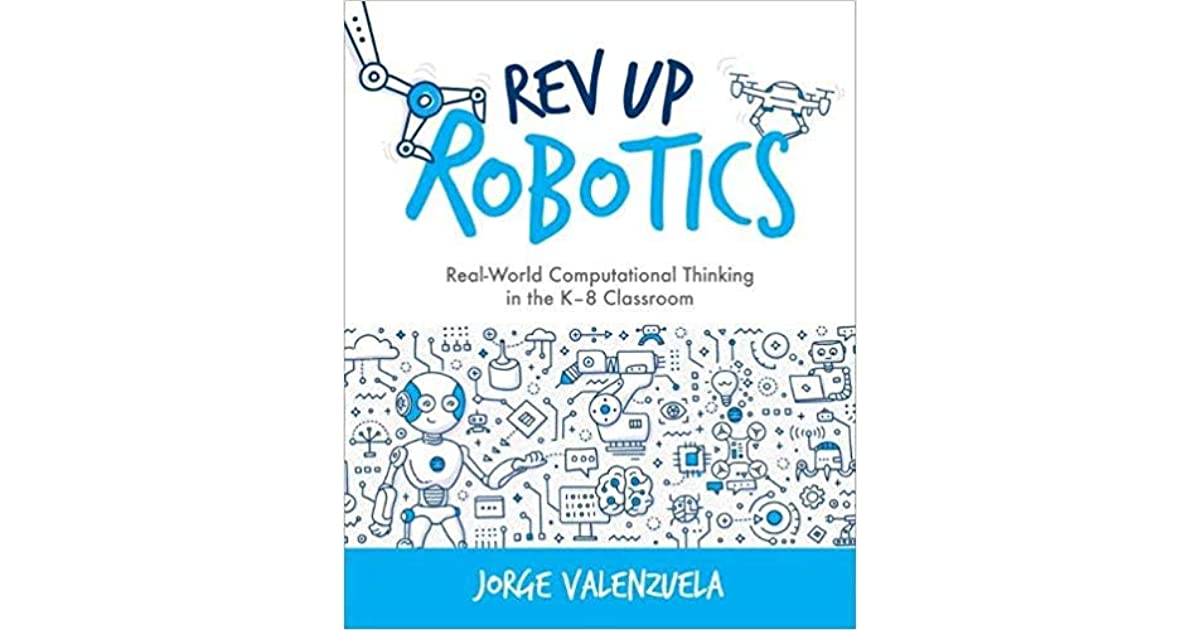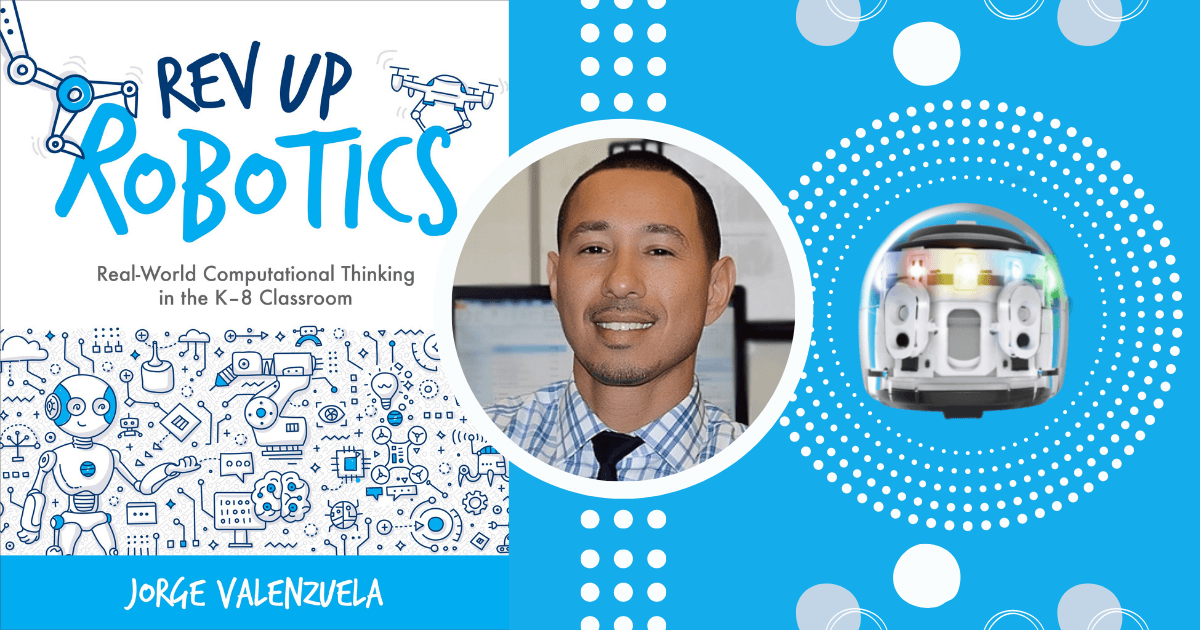Jorge Valenzuela has become an influential figure in STEM education with experience in classroom teaching, higher education instruction, and presenting. He worked in the Richmond Public Schools system for 10 years, during which he helped supervise and grow the success of the district’s Tech Ed program by focusing on connecting academic and career and technical education experiences. Later, Jorge became the lead coach at Lifelong Learning Defined and an adjunct professor at Old Dominion University. He also works with the Teach Better Team and PBLWorks. The main reason we’re excited to feature him is his book—an in-depth educator guide called Rev Up Robotics. It's also been called a ‘must-have’ for teachers who want to teach with robotics.
Jorge's background
Jorge has always advocated for evidence-based strategies in teaching today’s students and maintains that strategy in PD sessions. He wants to help education leaders and classroom teachers redesign instruction by helping them better understand the direction of the workforce. PBL and computational thinking are certainly two elements that can help prepare students and create greater equity through STEM education. In Rev Up Robotics, Jorge has outlined various practices for how school leaders can more effectively incorporate computational thinking, robotics, and computer science into everyday lessons. Then, it's about using these techniques to actively enhance learning.
Throughout the book, Jorge focuses on outlining how to bring real-world computational thinking into K-8 classrooms. It also covers aligning these approaches with standards requirements, STEM and STEAM, PBL, and more. Unlike other books on the topic, however, Jorge focused on the cross-curricular integration of robotics in education.

What about the book itself?
Over the book’s 184 pages, Jorge touches on robotics and computer science in three major sections. The first part is all about the basics—getting readers more familiar with educational robotics. He also explains some real-world applications and talks about teaching the foundational skills students need to excel in computer science.
In Part 2, Jorge focuses on how teachers can put robotics education into practice. This includes the role of robotics tools in various academic content areas and also includes lesson plan ideas that teachers can use and connect to educational standards, including ISTE and CSTA standards. Finally, Part 3 features research-backed pedagogical strategies and different techniques educators can use when teaching robotics. There's the PBL approach, integrating robotics as part of an afterschool club, or even leveraging robotics competitions.
Connecting with Jorge
Overall, Rev Up Robotics is a pretty in-depth guide for school leaders and classroom teachers. There’s a look at how educators can move from programming basics to teaching the more complex languages. It also features nods to resources from some of the major players in educational robotics and STEAM learning, like the Ozobot, littleBits, VEX Robotics, code.org, and NASA. When writing the book, Jorge set out to provide a resource that educators could use to sharpen their knowledge. He also wanted to help them understand more about the resources they can use to highlight computational thinking in the curriculum—something he delivered on.

Besides authoring this great book, Jorge is also a featured contributor for ISTE, littleBits, and written for Edutopia among others. He has received multiple awards from the ISTE and helped his company, Lifelong Learning Defined, grow into a trusted resource for educators. Rev Up Robotics is available to purchase on both the ISTE website and Amazon. You can follow Jorge on Twitter as well at @JorgeDoesPBL.



